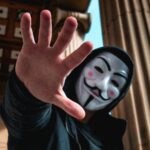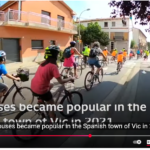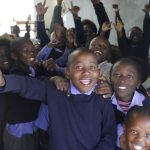 Given the enormous difficulty that the US and its allies have had in establishing a peaceful democratic future for Iraq, it is natural that many people are sceptical of the idea that international intervention in the internal affairs of another country can ever lead to a successful conclusion.
Given the enormous difficulty that the US and its allies have had in establishing a peaceful democratic future for Iraq, it is natural that many people are sceptical of the idea that international intervention in the internal affairs of another country can ever lead to a successful conclusion.
So we should celebrate and learn from a remarkable experience which has just come to a positive conclusion. The United Nations Assistance Mission in
Sierra Leone, UNAMSIL, successfully completed its mandate in December 2005 and the U.N. troops have been withdrawn over the last few weeks. The success of the U.N. mission in Sierra Leone has had very little attention in the media or among the bloggers presumably because failure makes better copy than success.
A recap of the intervention
You may recall that the conflict in Sierra Leone began in 1991. Foday
Sankoh, a former army corporal, led the Revolutionary United Front (RUF) in an attack from Liberia on the government of
President Joseph Momoh. The RUF adopted the brutal tactic of cutting off the hands of the population to maintain a rule of terror and instil discipline on its fighters. The Government of Sierra Leone used mercenaries, for example from Executive Outcomes, to defend themselves, and maintained a degree of control over the south of the country and on the capital, Freetown. Ahmad Tejan Kabbah was elected President in 1996. But in 1997 a group of disaffected soldiers
of the Sierra Leone Army mounted a coup, joined forces with the RUF, and called on Major Johnny
Paul Koroma, who was serving a prison sentence for treason, to lead them. Koroma’s military government drove President Kabbah and his government into exile in Guinea. But it was not recognised by other African nations, and it was largely shunned by the citizens of Sierra Leone. A Nigerian-led West African military force, known as ECOMOG, together with the Sierra Leone Civil
Defence Force led by Sam Hinga Norman, stepped in to remove the military government and reinstated President Kabbah in March 1998.
In January 1999 rebel groups attacked again, occupying most of
Freetown. ECOMOG forces eventually expelled them, but during the fighting over 5,000 people were killed and most of the eastern suburbs of
Freetown were destroyed. Both the rebels and ECOMOG forces reportedly
committed widespread human rights abuses. A ceasefire was agreed in May
1999, after pressure from the US Government. Kabbah and Sankoh signed the Lomé Peace Agreement in July 1999. The RUF rebels won seats in government and were granted an amnesty.
In October 1999, the Security Council established the United Nations
Mission in Sierra Leone (UNAMSIL) to oversee the peace agreement and to assist with
disarmament. The U.N. agreed to send 6,000 peacekeepers, which was later increased to 11,100 in Feb. 2000. But three months later violence erupted again as RUF rebels clashed with U.N.
troops, taking 500 peacekeepers hostage and
renouncing the ceasefire. Thousands fled as rebels advanced towards
Freetown. Over half the country was
under the control of rebels, and half of the population became Internally Displaced Persons.
In a bold move, the United Kingdom despatched British paratroopers in May 2000 to Freetown to evacuate EU
citizens and secure the airport to allow the arrival of UN
reinforcements. As a result, the RUF was prevented from taking the capital and government
forces assisted by Nigerian troops were able to counter-attack. By
late 2000 over 13,500 UN troops were deployed in the government
controlled south of the country while a British force of approximately
750 men was helping to train the Sierra Leone Army. The British also stationed a battleship, HMS Ocean, with 400 Royal Marines off the coast of Sierra Leone, to make it clear that the UK would not
stand by if the RUF threatened Freetown. In
September 2000, members of The Royal Irish Regiment and a Sierra
Leonian Officer were taken hostage by a volatile maverick group known
as the West Side Boys. The British rescue operation, reportedly mounted by the SAS, resulted in all the
hostages being released unharmed; one British soldier was killed and twelve were wounded.
The U.N.
Security Council demanded in March 2001 that rebels allow U.N.
peacekeepers into diamond mine areas they controlled and authorised an
increase of U.N. troops to 17,500. As the UN force increased in strength, and the Sierra Leone Army increased in capacity, rebels and pro-government militias started to hand over weapons to U.N. peacekeepers. In November 2000, the Kabbah Government and the RUF signed the Abuja Agreement, a
cease-fire agreement brokered by ECOWAS in Nigeria. UNAMSIL was deployed throughout the country, and the Government of Sierra Leone restored its
authority over the whole country.
In January 2001 President Kabbah declared that disarmament was
complete and the war over. By March the State of Emergency was lifted.
Work to consolidate the new and fragile peace began on a wide range of
fronts. Government services were restored throughout the country. Peaceful democratic elections in May 2002 returned President Kabbah. In June, 2003, the UN ban on the sale of Sierra Leone diamonds was lifted. The UN disarmament and rehabilitation program for
Sierra Leone’s fighters was completed in February 2004, by which time more
70,000 former combatants had been helped. UN forces returned primary
responsibility for security in the area around the capital to Sierra
Leone’s police and armed forces in September 2004, the last part of
the country to be turned over to domestic security control.
UNAMSIL withdrew in December 2005, having fully accomplished its mission of restoring peace, stability and democratic government to Sierra Leone.
Conclusions
This is a story of extraordinary success in which international forces restored peace and democracy to a nation racked by violence. It seems that key components of this success were:
- resolve on the part of other African countries, especially Nigeria, that they would not allow Sierra Leone to collapse into civil war, and would not tolerate the coup against an elected government;
- the establishment and successful operation of an African-led peace-keeping force, with a legitimate UN mandate to intervene in Sierra Leone;
- the willingness of the UK Government to use British forces to buttress the UN mission when it was necessary to step in quickly to prevent Freetown from faling in to rebel hands in May 2000 and to mount the successful rescue mission in September 2000, both of which had a profound psychological impact on the RUF rebels;
- recognition on the part of the UN that it was necessary to invest over several years in long term peacebuilding and disarmament.
More generally, it seems that wealthy nations are reluctant to use their armed forces to intervene in other countries, even in the face of a humanitarian catastrophe like the genocide in Rwanda, Sudan or the Congo, because they fear that they will be sucked in to a long-term commitment of troops and resources. ‘Quagmire’ is not a pretty word in an election campaign. But UN or AU forces lack the logistical capacity and equipment, and above all command structure, needed to deploy them quickly in the face of a rapidly unfolding disaster. What worked well in Sierra Leone was a sensible division of labour: the UK army moved quickly to prevent the rebels from taking control of Freetown in May-September 2000, and enabling the UN to strengthen its force there, but once it had secured Freetown it withdrew the bulk of its fighting forces, leaving UN peacekeepers to disarm the combatants and help to rebuild long-term stability. If we are looking for ways to work with African governments to help reduce conflict, and so build a safer and more prosperous continent, we would do well to consider institutional mechanisms to establish this sensible division of labour between rapid intervention by countries with the capacity to intervene rapidly, handing over to long term peacekeeping by international forces under the auspices of institutions such as the U.N.
Finally, as UNAMSIL draws to a successful conclusion, we should pay tribute to the brave soldiers of the British army and of UNAMSIL, who have fought with courage and dignity, and some of whom have died, to bring peace and restore democracy to Sierra Leone.





One response to ““Mission accomplished”: a success for international peace-keeping”
A fascinating account of a little-known saga with, for once, an apparently happy ending (so far, at any rate).Armed intervention by one country in another is of course perfectly legal if it takes place either at the invitation of the established government of the latter or with the approval of the UN Security Council. There can be problems over which of several competing groups is the established government if more than one has control over a significant part of the country’s territory. Britain has for some years now ‘recognised’ states, not governments, which enables us to deal with anyone we need to, without raising issues of contact conferring recognition. However, when President Kabbah was in exile and his ‘government’ didn’t control any part of Sierra Leone, it was a little awkward for us to continue to treat him as the legal government of SL and thus as possessing the capacity to issue a legal invitation to the UK to intervene in that country. But the UN was onside and we had the support of effectively all other African governments and international opinion generally in doing what we did. On this occasion at least Tony Blair did well in being prepared to use British military resources in someone else’s country!Brianhttp://www.barder.com/ephems/